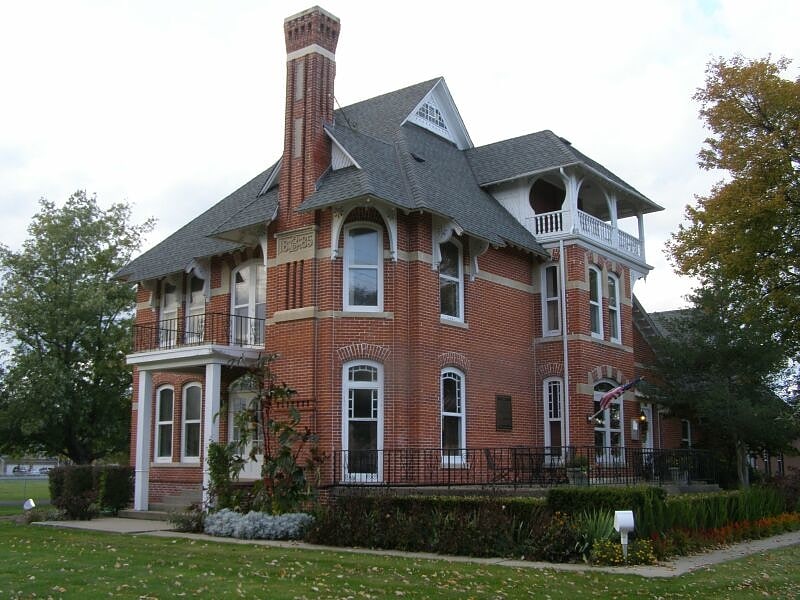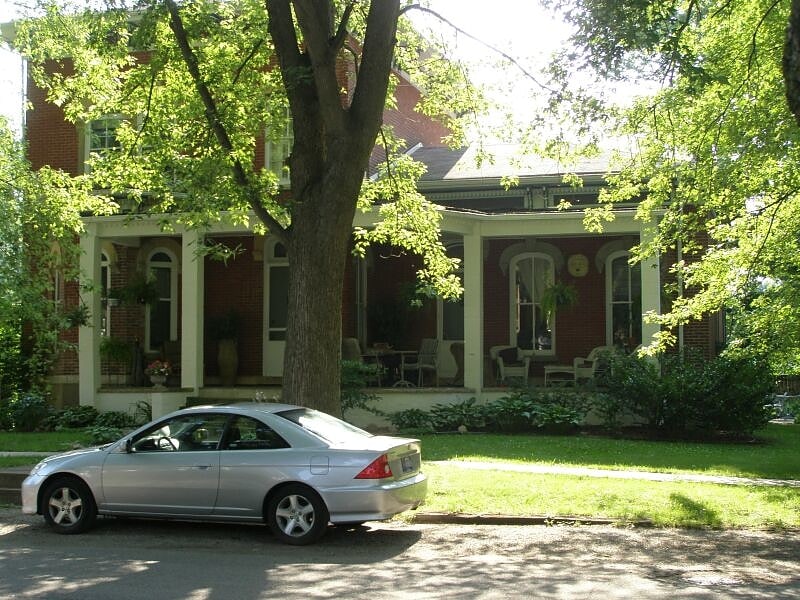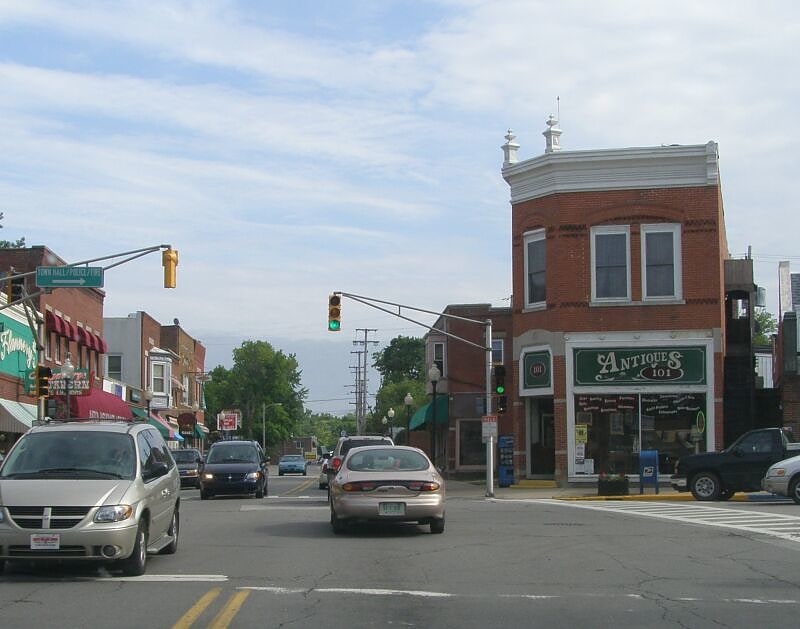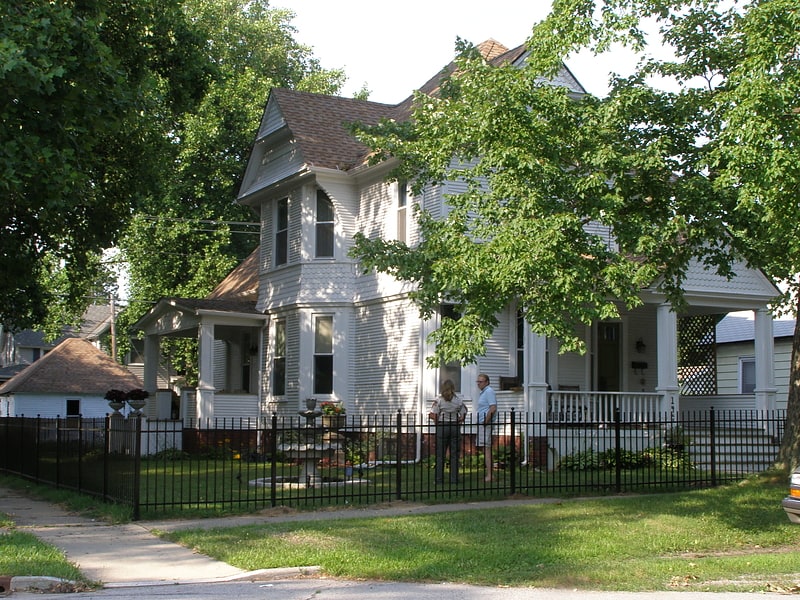Discover 6 hidden attractions, cool sights, and unusual things to do in Chesterton (United States). Don't miss out on these must-see attractions: George Brown Mansion, Martin Young House, and Norris and Harriet Coambs Lustron House. Also, be sure to include Westchester Public Library in your itinerary.
Below, you can find the list of the most amazing places you should visit in Chesterton (Indiana).
Table of Contents
George Brown Mansion

The George Brown Mansion is an example of the Queen Anne's Style of architecture. It was a dominant style during the 1880s and 1890s, the time when Chesterton was a growing city in northern Indiana. George Brown arrived in the United States in 1852. In 1855, he married Charity Carter, daughter of a local family. He became a successful farmer in the township. The farm was located on what is 950 North, west of 400 East. By the year 1882 he was operating a farm of 900 acres. He had expanded into supplying cordwood to the Porter brickyards after 1870. George and Charity had ten children. In 1884 George Brown bought 120 acres in the town of Chesterton from the John Thomas family. His plans called for a retirement home on this site. He engaged Chicago architect Cicero Hine to design the house. In 1891 the family sold all but 10 acres. It was the same year, that he built a brick store downtown at Calumet and Broadway. During the 1902 fire, it was the only store to survive. Charity Brown died in 1895 at 56. George died in 1899 at the age of 71. After a probate fight, his son John Franklin moved into the house with his family.
In 2010, the Westchester Historical Society uses the Brown Mansion as the Westchester Township History Museum and Society offices.[1]
Martin Young House

Building in Chesterton. Martin Young shows up in the abstracts of several significant real estate transactions that provided for the growth of the town of Chesterton. He does not appear to have had a major role in the development on the town, except it apparently provided him with the means to build the Italianate home on Second Street. Young's prominence in the community began with the death of Cornelia Woods. She owned numerous acres on the south and southeast sides of downtown Chesterton since 1872. When she died in 1891, her five children from two marriages could not agree of the dispensation of the estate. In October, 1891 they reached a settlement and allowed Commissioner George Morgan to sell the property to Martin Young for $5,400. Young bought two parcels, one of 42.52 acres and the other of 14 acres. “except one acre conveyed by grantors April 30, 1894 to the Chesterton Paint Manufacturing company”, this was the complete estate of Cornelia Woods. In 1907, the Chesterton Realty Company purchased the area east of Coffee Creek and platted the Morgan Park development. Martin Young received $8,220 for his land.
This "mansion" was built by Thomas Miles (1827 VA - 1893 Chesterton, IN) in 1878. (4/18/1878 Vidette Messenger) He was in Chesterton in 1880 with his wife Ellen (Morrical) Miles and six children. In 1889, Ellen left for Findlay, Ohio with the children. (12/13/1889 Chesterton Tribune) Martin Young bought the house in 1888 after Thomas Miles "met with a series of business reverses that rendered him bankrupt". Thomas Miles died July 1, 1893, and is buried in Chesterton cemetery with no gravestone. The obituary said he died "penniless." (7/7/1893 Chesterton) Today the house is known as the "Martin Young" house.
It was listed on the National Register of Historic Places in 2007.[2]
Norris and Harriet Coambs Lustron House

The Norris and Harriet Coambs Lustron House, also known as the Coambs-Morrow House, is a historic Lustron house located in Chesterton, Indiana. It was built in 1950, this was one of the last manufactured Lustron homes of the 2500 sold and produced by the Lustron Corporation. The house has a Lustron two-car detached garage and is located in a pre-World War II subdivision with some homes dating before World War I. The house is a one-story ranch style with no basement. It contains three bedrooms with living room, dining area, kitchen, utility and bathroom totaling 1,200 square feet of living space.[3]
Westchester Public Library

Library
Address: 200 W Indiana Ave, Chesterton
Chesterton Commercial Historic District

Historical place in Chesterton, Indiana. The Chesterton Commercial Historic District is a historic district in Chesterton, Indiana.
Originally called Coffee Creek and located a little to the south of the current downtown, the name was changed some time after the post office was established in 1833 to Calumet, the river to the north. When the Lake Shore and Michigan Railroad came through the area in 1852, the town moved north to the current location and began to develop. The town's name was not changed to Chesterton until after the Civil War. There appears to have been confusion with Calumet, Illinois, further up the track.
The town's location along the railroad helped industry to grow. Soon, there was a cooperage, sawmills, a washing machine factory, and an organ company. Among the better examples of the towns growth are the commercial building on the southwest corner of Broadway and Calumet Rd, and the old Chesterton Tribune Building.[4]
Chesterton Residential Historic District

Located in Chesterton, Indiana, the Chesterton Residential Historic District is located a block south of the business district, along Second Street from Indiana Ave. to Lincoln Ave. and on Indiana Ave. from Second to Third Streets. The area began with the Martin Young House construction about 1870. The Historic Landmarks Foundation of Indiana describes as one of the best Italianate structures remaining in northwest Indiana. Most of the structures date from the early twentieth century. St. Patrick's Catholic Church, built in 1876, and burned ca. 2000.
The historic district was established in December 2009[5]